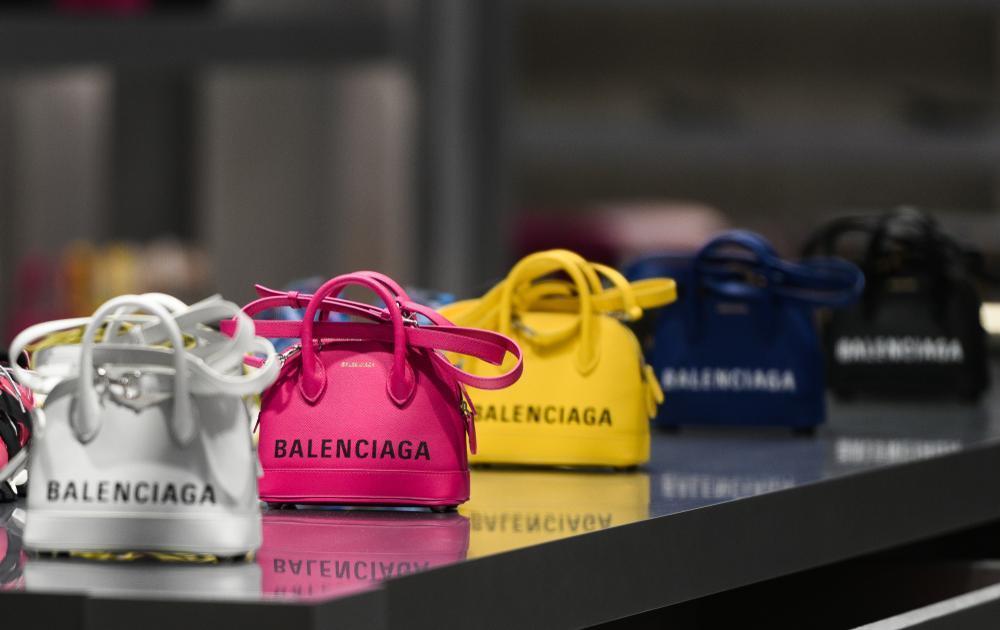You’ve seen those True Fashionista bright-colored windbreakers, the stunning floral printed “It” bags, oversized outfits and those rockin’ gladiator boots, not to forget the logo-emblazoned t-shirts worn by those in the know. This house has the hipster factor of the street, and its name is Balenciaga.
Would you ever have thought that the Balenciaga brand was almost 100 years old? Born in 1895 to a seamstress mother in the northern Italy town of Getaria, label namesake Cristóbal Balenciaga had fashion in his blood. His mother’s clientele included some of the region’s most glamorous women. Young Cristóbal caught the bug early, and at age 12, he started an apprenticeship with a tailor in nearby San Sebastian. In 1917 he opened his first fashion house, which he called Eisa after his mother’s maiden name, Eisaguirre. Upon favorable reception, houses in Madrid and Barcelona followed, but the Spanish Civil War forced him to shut these down and move to Paris in 1937. It was here that he launched House of Balenciaga, which quickly rose to prominence, garnering him the title “The Master” of haute couture.
“Haute couture is like an orchestra whose conductor is Balenciaga. We other couturiers are the musicians and we follow the direction he gives”….Christian Dior
Within a short period of time, the True Fashionista house on Avenue Georges V became the city's most expensive and exclusive couturier. Balenciaga’s early training served him well for this launch, setting him apart from other couturiers of the time. He knew his craft inside out and was adept at every stage of the designing process, from pattern drafting to cutting, assembling and finishing a garment. He focused his design process on starting with the fabric rather than with a sketch. "It's the fabric that decides", he famously asserted.
Drawing on his Spanish heritage, Balenciaga’s designs included his wide-hipped Infanta dresses in the late 30’s, as well as creations based on flamenco dresses, matador outfits and black lace.
He broke ground again in the 1950’s, pioneering new shapes never before seen in women’s fashion, like balloon hems in the early 50’s and semi-fit lines including dresses and jackets fitted at the front but with open, roomy backs. His 1957 “sack dress” completely eliminated the waist, and although initially rejected, it became the forerunner of the sixties mini-dress.
Now at his height of popularity, Balenciaga dressed some of the most True Fashionista women of the 1950’s and 60’s including actress Ava Gardener, fashion icon Gloria Guinness and Mona von Bismarck, one of the world’s wealthiest women, who commissioned entire wardrobes. UK museum V&A online reports that when his fashion house closed in 1968, the news shocked his clientele with a deep sense of loss . It was rumored that Ms. Bismarck was so distraught that she stayed in her room for three days straight.
Balenciaga passed away four years later at age 77, whereby some stories would be over, but not this one.
The house of Balenciaga remained silent for close to two decades before a new cadre of designers and creative directors were brought in to relaunch the brand with eyes on the 21st century. A family company known as The Bogart Group acquired the rights to Balenciaga in 1986 and, helmed by Michel Goma, released a new ready-to-wear line called Le Dix. In 1992 Goma was replaced by Josephus Thimister, who brought the brand back to its semi-tailored origins before being let go in 2017 after guests walked out on a runway show featuring painfully loud electronic background music. (Author: cue eyroll)
Nicolas Ghesquière followed for a 15-year tenure debuting with a collection of mostly black garments, evoking True Fashionista memories of Cristobal Balenciaga’s infatuation with silhouettes. He continued to reinvent the Balenciaga wheel, infusing archival pieces with modern touches of vibrant color and current trends. It was Ghesquière’s work that restored Balenciaga’s position in high fashion.
When Alexander Wang took over for a brief six seasons, he gave the brand a hip, youthful appeal with additions like mesh and exposed zippers. Wang is also credited with paying homage to Mr. Balenciaga himself, reports Chantal Walsh for Harper’s Bazaar, dressing many mega-stars including Lady Gaga, Julianne Moore, Kim Kardashian and Zoe Kravitz in his Balenciaga creations.
Upon Wang’s departure in 2015, Demna Gvsalia was brought onboard as Creative Director. A cofounder of Paris-based label Vetements, he had also logged time at Louis Vuitton. Georgian-born Gvsalia brought the street aesthetic to Balenciaga with looks like dramatic oversizing and deconstruction, channeling Cristobal into designs featuring broad shoulders and draping along with his own love of street culture, reinventing the brand for social media.
As Balenciaga continues to forge ahead in high fashion, perhaps Gvasalia has said of his latest collection, “It is important to know the past in order to build the future”.
Discover Balenciaga and more in our constantly updated collection at the True Fashionistas website and our eBay store, as well as in person at our Naples, Florida store, now open and sanitized for your shopping protection.





























